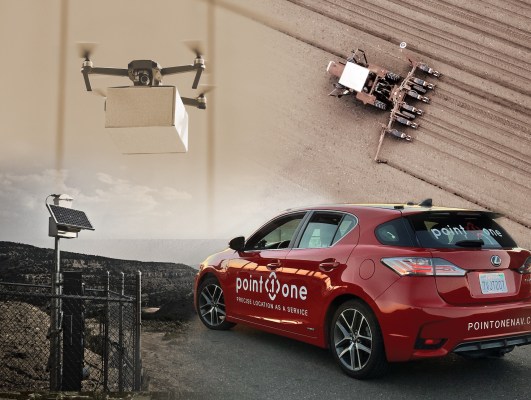Drivers who spend any time commuting in a new car or truck have likely experienced ping ponging — a phenomenon when a vehicle equipped with an advanced driver assistance system has trouble centering itself in a lane and bops back and forth until it finds that sweet spot.
Point One Navigation jumped on the scene in 2016 with technology that eliminates that and other problems that occur when a vehicle isn’t in the exact location it’s supposed to be. The San Francisco-based startup has developed an API for precise location that can be applied to any vehicle that moves, from urban air taxis and drones to scooters, ADAS-equipped vehicles, autonomous vehicles and even farm equipment.
“Location is one of the pillars of robotics that needs to be solved,” CEO and co-founder Aaron Nathan said in a recent interview. “Every single company, whether they’re trying to build a robot to pick weeds in a field or drive down the highway, has a team of engineers trying to figure out like, where is the damn thing? We said: ‘what if we could just take that problem off the table and solve it generically for all those use cases and really allow our customers to focus on their application?'”
Specifically, Point One’s technology combines augmented global navigation satellite system (GNSS), computer vision and sensor fusion into an API. What this means is that through an API, a drone manufacturer, robotics startup or trucking company can know where its vehicle is, down to 10 centimeters. Point One demonstrated its technology at the self-racing car event in October with an autonomous vehicle that drove a Thunderhill Raceway Park course in reverse.
Their product, which begin shipping in 2020, has attracted a number of investors who see opportunity in its broad application across transportation — and even to other industries, including consumer electronics. Point One recently closed a $10 million Series A round led by UP.Partners, with participation from existing investors including BOLT, IA Ventures and Ludlow Ventures.
Technology exists today that provides what Nathan describes as a partial location service. It might tell someone the general area a robot is in a vast farm field or it might work in some areas and not others. Point One is able to provide customers with 10 centimeters of accuracy anywhere in the world.
Today, Point One’s product, which began shipping about a year ago, is in series production with two unnamed automotive customers. In these automotive applications, Point One is able to deploy this tech as a software product since new vehicles today have the hardware already required. With other customers, like say a scooter company, Point One might also need to include a chipset.
The company initially focused on automotive, including being applied to Level 2 advanced driver assistance systems. The 20-person company is now focused on expanding to new segments, including micromobility. Point One also has production deals with agriculture customers — think “smart” tractors — as well in the drone delivery segment.
It is also targeting what Nathan described as “emerging developers,” people working on products that might not be fully developed.
“The question is how do we very quickly expand into those markets and make sure that everyone is aware that Point One can just solve this problem for you — and you don’t have to boil that part of the ocean,” Nathan said.
